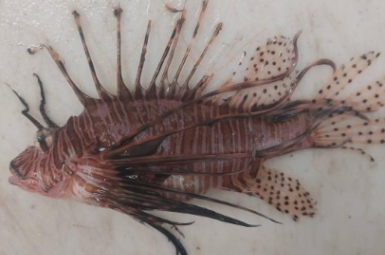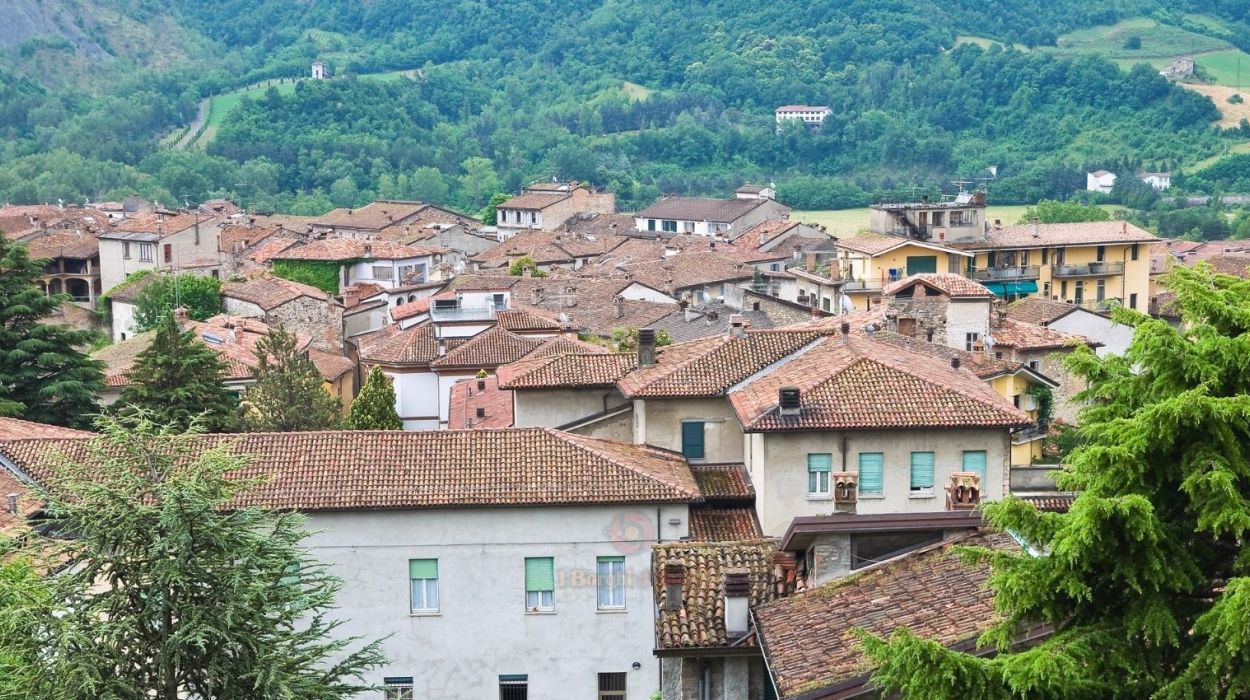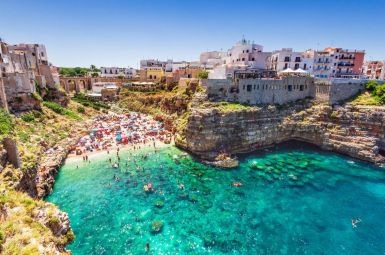
Il Borgo di Bobbio
Bobbio: L’Anima Medievale della Val Trebbia
Bobbio, insignito del titolo di “Borgo più Bello d’Italia” e della prestigiosa Bandiera Arancione del Touring Club Italiano, non è solo una località, ma un vero e proprio viaggio nel cuore del Medioevo padano. Immerso nel verde intenso della Val Trebbia (una valle che persino Ernest Hemingway definì “la più bella del mondo”), questo gioiello della provincia di Piacenza incarna perfettamente il connubio tra spiritualità, architettura millenaria e una natura spettacolare.La Doppia Icona di Bobbio: Storia e Leggenda
Il profilo inconfondibile di Bobbio è definito da due monumenti che ne raccontano l’identità:- L’Abbazia di San Colombano: Fondata nel 614 dal monaco missionario irlandese San Colombano, l’Abbazia è il fulcro storico e spirituale del borgo. Per secoli è stata uno dei centri culturali più importanti d’Europa, grazie al suo Scriptorium e alla ricchezza della sua biblioteca. Oggi, l’imponente complesso accoglie i visitatori con la Basilica, il Museo dell’Abbazia e la suggestiva Cripta che custodisce le reliquie del Santo e mosaici del XII secolo.
- Il Ponte Gobbo (o Ponte del Diavolo): Lungo 273 metri e caratterizzato dalle sue 11 arcate irregolari e a diverse altezze, il ponte è l’emblema visivo della città. Chiamato anche Ponte del Diavolo, è avvolto da una leggenda affascinante: si narra che fu costruito in una notte dal Diavolo in persona, che poi, ingannato da San Colombano, sferrò un calcio alla struttura, rendendola “gobba”. Questa meraviglia romanico-medievale, percorribile solo a piedi, offre uno scorcio scenografico sulla città, tanto che alcuni studiosi lo identificano come il ponte ritratto nello sfondo della Gioconda di Leonardo da Vinci.
Oltre l’Architettura: Un Borgo da Vivere
Passeggiare per Bobbio è un’esperienza sensoriale. Il borgo ha conservato intatto il suo impianto medievale, con stradine di ciottoli che si snodano tra Palazzi Trecenteschi ottimamente conservati e gli antichi portici della Contrada del Castellaro, un tempo sede delle botteghe artigiane. Dominante sull’abitato, il Castello Malaspina-Dal Verme, un’imponente fortezza medievale, veglia sulla città e sulla valle, offrendo un panorama mozzafiato. Bobbio è un luogo versatile, godibile in ogni stagione:- In estate, le acque cristalline del fiume Trebbia invitano a escursioni e momenti di relax in una cornice naturale sorprendente.
- In inverno, la vicinanza al Monte Penice offre opportunità per gli sport sulla neve.
- Tutto l’anno, manifestazioni culturali come il Palio delle Contrade e i mercati animano le sue piazze.

Il Borgo d’Italia
tutto da scoprire ed esplorare
Monumenti
BOBBIO: DOVE STORIA E LEGGENDA SI INCONTRANO SULLA TREBBIA
Bobbio, uno dei borghi più affascinanti d’Italia, non è solo una meta, ma un vero e proprio viaggio nel tempo. Situato nel cuore della Val Trebbia, questo gioiello piacentino vanta un patrimonio monumentale unico, dove la potenza della storia medievale si fonde con il fascino inebriante delle leggende locali.
Il Ponte Gobbo (o Ponte del Diavolo): L’Icona Sospesa
Il Ponte Vecchio, noto universalmente come Ponte Gobbo (o del Diavolo), è l’immagine simbolo di Bobbio. Non è solo un’opera ingegneristica, è pura scenografia, un’architettura che sfida le convenzioni.
- La Struttura Irregolare: Con i suoi 11 archi disuguali e posti ad altezze diverse, il ponte disegna un profilo ondulato e sinuoso, da cui il soprannome “Gobbo”. Questa peculiarità lo rende straordinariamente fotogenico, specialmente al tramonto, quando le sue silhouette si riflettono sulle acque limpide del fiume Trebbia.
- La Leggenda: Il fascino del ponte è amplificato dalla narrazione popolare che lo vuole costruito in una sola notte dal Diavolo in persona, in cambio dell’anima del primo che l’avrebbe attraversato. Un mito suggestivo che aggiunge un tocco di mistero medievale alla vostra visita.
- Storia Viva: Sebbene le sue origini siano incerte (probabilmente romane), la sua costruzione sovrastante è legata al VII secolo e all’opera dei monaci di San Colombano, a testimonianza della sua vitale importanza come via di collegamento.
L’Abbazia di San Colombano: La Culla del Sapere Europeo
La storia di Bobbio è indissociabile dal suo fulcro spirituale e culturale: l’Abbazia di San Colombano. Fondata nel 614 dal monaco irlandese San Colombano, divenne rapidamente uno dei più importanti centri monastici e culturali dell’Alto Medioevo.
- Un Complesso Monumentale: Il vasto complesso comprende la Basilica di San Colombano (ricostruita nel ‘400), che custodisce il sarcofago del Santo, e una splendida Cripta con mosaici pavimentali del XII secolo.
- Il Famoso Scriptorium: L’Abbazia è stata per secoli la sede di un celebre scriptorium e di una delle più ricche biblioteche d’Europa, un vero faro di conoscenza. Oggi, parte dei suoi locali ospita il Museo dell’Abbazia e il Museo della Città, offrendo un percorso immersivo nella storia religiosa e civile del borgo.
La Cattedrale di Santa Maria Assunta e il Castello Malaspina
Oltre ai suoi due simboli principali, Bobbio incanta con altre architetture che narrano secoli di potere spirituale e militare.
- La Concattedrale: La Cattedrale di Santa Maria Assunta, edificata nell’XI secolo in stile romanico, domina la piazza principale del borgo. All’interno, la bellezza si rivela attraverso le decorazioni moderne nelle navate e il pregevole affresco settecentesco dell’Ascensione della Vergine nella cappella maggiore. Le sue due imponenti torri ne definiscono lo skyline.
- Il Castello Malaspina-Dal Verme: Arroccato sulla collina che veglia sul borgo, il Castello Malaspina-Dal Verme è una possente fortezza medievale del XIV secolo. Consiste in un imponente mastio centrale e due torri, che conservano ancora intatte le mura difensive. Dagli spalti, i visitatori godono di una vista panoramica mozzafiato sul centro storico e sulla valle del Trebbia, un punto di osservazione privilegiato sulla storia di Bobbio.
Bobbio è un luogo dove ogni pietra ha una storia, e ogni monumento è una porta aperta su un passato glorioso, pronto a essere esplorato e ammirato.
Curiosità
BOBBIO: LEGGENDE, CINEMA E MISTERI SULLO SFONDO DELLA VAL TREBBIA
Bobbio è molto più di uno dei “Borghi più Belli d’Italia”. È un palcoscenico naturale dove la storia medievale, il grande cinema e le leggende popolari si fondono, creando un’atmosfera unica. Preparatevi a scoprire le curiosità che rendono questo borgo un tesoro di misteri e meraviglie.
Il Ponte Gobbo tra Diavoli e Geni del Rinascimento
Il Ponte Gobbo, con la sua affascinante struttura irregolare, è la vera celebrità del borgo, ma nasconde segreti che vanno oltre l’ingegneria.
- La Beffa di San Colombano: Il soprannome Ponte del Diavolo deriva dalla leggenda che narra come San Colombano strinse un patto con il Demonio per far costruire il ponte in una sola notte. Il Diavolo, in cambio dell’anima del primo attraversatore, realizzò gli archi in modo gobbo e storto. Tuttavia, il monaco lo beffò astutamente, facendo attraversare il ponte per primo a un cane, lasciando il Diavolo furioso e a mani vuote.
- Il Mistero della Gioconda: Secondo una controversa ma affascinante teoria sostenuta da alcune studiose, lo sfondo montuoso e il ponte che si intravedono nel celebre dipinto di Leonardo da Vinci non sarebbero altro che i paesaggi di Bobbio e il suo Ponte Gobbo. Il dibattito è aperto, ma l’idea che la Monna Lisa abbia ammirato (o sia stata ritratta con) questa vista aggiunge un incredibile strato di fascino rinascimentale al luogo.
Bobbio: Un Borgo da Oscar
La Val Trebbia e Bobbio sono indissolubilmente legati al mondo del cinema, grazie a uno dei suoi più grandi maestri.
- La Patria di Marco Bellocchio: Bobbio è la città natale del celebre regista Marco Bellocchio. Il borgo e i suoi paesaggi aspri hanno funzionato da set e da ispirazione per molte delle sue opere più importanti, come il capolavoro “I pugni in tasca” (1965) e i successivi Sorelle Mai e Vacanze in….
- Il Borgo-Set: Camminando per le vie del centro storico e raggiungendo luoghi come il cimitero fuori dal borgo, vi ritroverete letteralmente nei luoghi chiave del cinema d’autore italiano. Questa vocazione cinematografica è celebrata ogni anno con il Bobbio Film Festival, un evento di prestigio che porta registi e attori internazionali tra le mura dell’antica Abbazia.
Il Fiume Hemingway e il Microclima da Sogno
- La Valle più Bella del Mondo: Il fiume Trebbia, che scorre sotto il Ponte Gobbo, fu definito dallo scrittore Ernest Hemingway come “la valle più bella del mondo”. Il fiume è noto per le sue acque limpide e la sua bellezza selvaggia, ideale per momenti di relax e sport acquatici.
- L’Influenza Modaiola: Perfino la moda è stata toccata dal fascino di Bobbio: si dice che il “greige”, un colore iconico per la maison di Giorgio Armani, sia stato ispirato proprio dalle sfumature della sabbia bagnata del Trebbia.
- Un’Eredità Internazionale: L’Abbazia di San Colombano, fondata da un monaco irlandese, fu un faro di cultura nell’Alto Medioevo, con una biblioteca e uno scriptorium tra i più importanti d’Europa. Questa origine straniera ha reso Bobbio, per secoli, un punto d’incontro cruciale tra culture, ben oltre i confini italiani.
Personaggi
L’ORGOGLIO DI BOBBIO: TRA MAESTRI DEL CINEMA E LEGGENDE DEL SECOLO CORSO
Bobbio, pur essendo un gioiello incastonato nella Val Trebbia, non è solo storia millenaria e leggende. È anche una culla di talenti che hanno lasciato un segno indelebile, soprattutto nel mondo del cinema e della cultura italiana, portando il nome del borgo sui palcoscenici internazionali.
Marco Bellocchio: Il Maestro e le Sue Radici
Il nome più celebre e autorevole legato a Bobbio è senza dubbio quello di Marco Bellocchio, uno dei più grandi e lucidi registi del cinema italiano contemporaneo.
- Nato nel Borgo, Cresciuto nel Cinema: Bellocchio è nativo di Bobbio (9 novembre 1939). Le sue radici qui non sono solo un dato anagrafico, ma il cuore pulsante della sua cinematografia, un paesaggio dell’anima che emerge in molte delle sue opere.
- I Pugni in Tasca e Bobbio: È proprio a Bobbio, appena ventiseienne, che girò il suo folgorante esordio: “I pugni in tasca” (1965). Questo capolavoro, che anticipò le tensioni del Sessantotto, utilizzò gli ambienti della provincia bobbiese – tra cui il famoso Ponte Gobbo e il vecchio cimitero – come uno sfondo potente e claustrofobico per raccontare il dramma e la ribellione familiare.
- Il Borgo-Set Culturale: Il legame non si è mai spezzato. Bellocchio è tornato stabilmente alle sue origini con il progetto “Fare Cinema” e l’omonimo Bobbio Film Festival. Ogni estate, il borgo si trasforma in una fucina cinematografica, dove giovani talenti studiano e realizzano cortometraggi sotto la guida del Maestro, dimostrando come Bobbio sia ancora oggi un centro di produzione culturale di altissimo livello. Film più recenti come Sorelle Mai e Sangue del mio sangue continuano a esplorare l’immaginario e la storia di questa terra.
Altri Nomi Nati Sulle Rive della Trebbia
Oltre al grande regista, Bobbio e il suo immediato territorio hanno dato i natali ad altre figure che meritano di essere ricordate, specialmente nell’ambito dello sport e dell’imprenditoria.
- Gigi Rizzi (1946-2017): Se Bellocchio ha portato Bobbio al cinema d’autore, Rizzi l’ha portata nel jet-set internazionale. Sebbene non sia noto per meriti artistici o scientifici, è diventato celebre negli anni ’60 come simbolo della Dolce Vita, noto per la sua relazione con l’icona del cinema Brigitte Bardot. Un bon vivant che, in modo inaspettato, ha connesso il piccolo borgo emiliano con le cronache mondane di Saint-Tropez.
- Figure Storiche e Sportive: La storia locale ricorda figure come gli industriali Vittorio Malacalza e Luigi Malaspina, e, uscendo dalle sole celebrità, la famiglia di Bobbio ha espresso anche personalità legate allo sport e alla cultura come il calciatore Giancarlo Cella.
Bobbio è dunque una piccola città di grandi storie: quelle secolari che partono da San Colombano e quelle più recenti, incorniciate dal fiume e messe in scena da uno dei suoi figli più illustri.
Ricette Tipiche
LA TAVOLA DI BOBBIO: UN VIAGGIO NELLA TRADIZIONE TRA PASTA ALL’AGO E SAPORI DI VAL TREBBIA
La cucina di Bobbio è l’espressione autentica di un territorio di confine, dove la robustezza della montagna incontra la sapienza culinaria contadina. I piatti tipici sono un inno alla manualità e al sapore intenso, testimonianza di una tradizione che si tramanda immutata.
I Maccheroni alla Bobbiese: L’Arte dell’Ago
Il piatto simbolo indiscusso di Bobbio e di tutta la Val Trebbia è il Maccherone alla Bobbiese, o come viene chiamato in dialetto, Macaròn a ra bubbieiza fat còn l’angùcia (fatto con l’ago). Non è semplicemente pasta, ma un vero e proprio Prodotto Agroalimentare Tradizionale (PAT) che celebra una tecnica artigianale unica.
- La Preparazione Mitica: L’unicità di questa pasta fresca all’uovo risiede nella sua formatura: l’impasto viene tagliato in strisce sottili e arrotolato meticolosamente attorno a un ferro da calza o un grosso ago. Questo conferisce al maccherone una caratteristica forma cava all’interno e leggermente ruvida all’esterno, perfetta per trattenere il sugo.
- Il Ragù Lento e Ricco: Tradizionalmente, i maccheroni sono conditi con un ragù di stracotto (carne di manzo o un misto di carni) cotto lentamente per ore, sfumato con vino rosso e arricchito da odori e, in alcune varianti, da funghi porcini della valle. Il risultato è un primo piatto di una ricchezza e intensità di sapore inimitabili.
I Pinoli Bobbiesi: Piccoli Tesori Verdi
Meno noti dei Maccheroni ma altrettanto radicati nella tradizione locale, i Pinoli Bobbiesi sono un primo piatto che esalta gli ingredienti poveri e saporiti della campagna.
- Gnocchetti di Ricotta e Spinaci: Il nome Pinoli deriva dalla loro forma allungata e ridotta, simile appunto a quella dei pinoli. Sono essenzialmente piccoli gnocchetti preparati con un impasto a base di ricotta, spinaci (o altre erbe di campo) e Parmigiano grattugiato.
- Perfetti con il Sugo di Funghi: La tradizione li vuole accompagnati con un ricco sugo ai funghi (spesso porcini locali), oppure con un condimento semplice a base di burro fuso e salvia, che ne esalta il sapore delicato e vegetale.
Il Dolce della Fede: Il Dolce di San Michele
Sebbene la Torta di San Michele sia un PAT diffuso in varie aree dell’Emilia-Romagna, a Bobbio riveste un significato particolare legato alla profonda tradizione religiosa.
- Base di Pasta Frolla e Frutta Secca: Questo dolce è una squisita celebrazione della pasticceria locale. Consiste in una base di pasta frolla farcita con una ricca crema (spesso panna o crème patissière) e decorata in modo elaborato con frutta a guscio (mandorle, noci, nocciole e pinoli).
- Dolce Festivo: Il dolce veniva preparato e consumato in occasione della festa patronale, simboleggiando l’abbondanza e la celebrazione. Il suo gusto sofisticato e la presentazione elegante lo rendono un finale perfetto per ogni pasto bobbiese, ideale se accompagnato da un vino dolce locale come il Malvasia.
Queste ricette non sono solo cibo: sono la storia, l’identità e il calore di Bobbio serviti in tavola.


